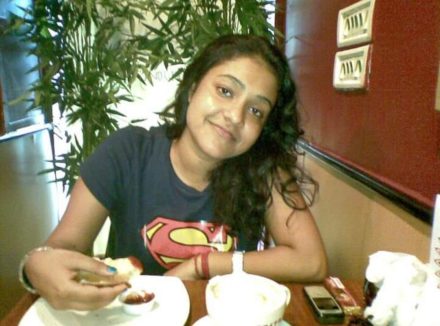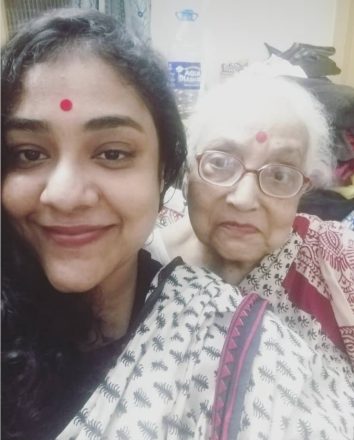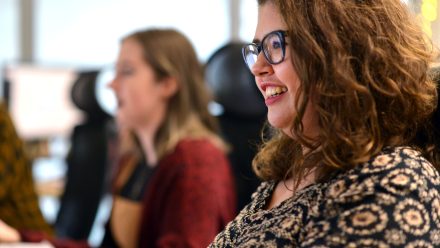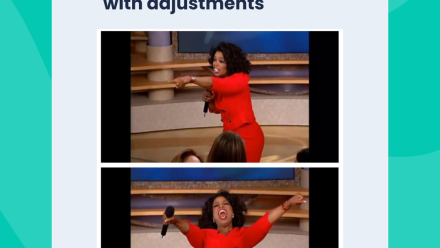To: Me, From: Me: A Reflection on Identity and Resilience
19th November 2024 by Ronisha Bhattacharyya
Infinite hope in a world of invisible struggles

Dear Rony,
As I write to you from the future, I bring a quote that I have interpreted in several ways along my journey. I hope you, too, will find new meanings and language to this quote as you experience life’s changes and challenges:
“We must accept finite disappointment, but never lose infinite hope”
– Dr. Martin Luther King Jr.
Recognize the unfair erasure of your condition, but don’t let it define you.
India, a country of billions, where every individual lives with their unique intersectional realities, yet disability remains a missing conversation.
My earliest memory of seeing someone rendered invisible due to disability was watching my grandmother, who, like me, struggled with early osteoporosis—a genetic, autoimmune condition affecting bone density. I would often see her wriggling her way, trying to fit into an able-bodied world. I remember watching her sit inside hotel rooms or cars in hill stations while others galloped freely around the steep mountains. I am certain that her meandering eyes, gazing outside, imagined an inclusive world where she, too, could experience the outdoors as we did.

Given these early experiences, it seems natural that I have spent much of my life internalizing ableism. In 2014, at just 25, when my orthopaedic doctor informed me of my arthritis diagnosis and accompanying chronic pain, I vividly remember him saying that I had “10 good years” before it would go downhill. My reaction was a mix of panic and utter despair, fuelling a blame game towards my gene pool. I threw myself into gruelling gym regimens, deprived myself of food I enjoyed, and embarked on a mission to stave off weight gain that might exacerbate my symptoms. The unfortunate reality is that medical research has far less data on how chronic pain affects women than men. In the absence of gendered research, I unknowingly harmed my bone health further all through my 20s.
Despite arthritis being an epidemic in India, it’s alarming to see how little it’s discussed in mainstream media, rendering it an invisible issue that affects several women throughout their lives. This invisibilisation intensifies as women, especially as they age, occupy increasingly less space in workplaces, public spaces, and even within their own homes. Where do these women go? Where can I find this community?
Don’t “other” yourself
My earliest experience of being ‘othered’ in the workplace occurred a decade ago. I couldn’t participate in an office event I had helped organize due to a flare-up and the lack of a lift at the venue. When I raised this, people offered clueless suggestions, from proposing I “take it one step at a time” to an amused colleague offering to carry me. No one suggested finding a more accessible venue. This reaction made me realize just how deeply ingrained the idea of disability as an anomaly is. A dearth of accessible spaces, ergonomic seating, leg rests, frequent mobility breaks, and supportive ecosystems—all these were glaringly absent as I navigated my career as a young woman in the Global South.
The internet is teeming with articles on the prevalence of arthritis, especially amongst young women, challenging the narrative that it is an “old person’s disease.” But despite this, the lack of real representation for women with arthritis leaves them alienated in society’s normalised rhythms. This void certainly impacted a young, confused Rony, who often wondered if her experience would have been different had she been able to grieve this deeply personal loss of bodily agency within a community of women facing similar journeys. The answer always comes back as an unwavering, loud YES.
Know the difference – equity over equality
While I now identify as a disabled person, the path to this was challenging and is still one I grapple with. Working in India, I quickly realized that only the most visible disabilities receive any acknowledgement, and the tokenistic way disability is treated often leaves individuals reluctant to call themselves disabled. Overcompensating became my norm—I would work harder and longer to make up for the days flare-ups held me back. And business simply carried on.
My understanding of equity over equality crystallized relatively recently. In 2019, at a panel discussion I helped organize, disability rights activists and government officials discussed how ‘starting points’ matter. Listening to them discuss the structural disadvantages that create different starting points made me reflect on my own journey. Yes, I want equality, but would it serve me in the absence of equity? The social model of disability recognises this and how societal and environmental barriers often prevent full participation. It removes the onus from the individual to constantly advocate for access and places responsibility on society to create true inclusion.
The simplest way to implement this model at work is to acknowledge that disability affects each person differently. At D&A, I feel genuinely cared for; my worth as an employee is not defined by whether I can show up every single day in the same capacity. Policies that allow sick leave outside overall leave quotas, flexible hours, and hybrid settings are gestures of absolute inclusion and compassion. These aren’t humbugged accommodations—but are rights that I hold as an employee. While these practices may seem like the bare minimum, I’m acutely aware that we have a long way to go towards universal acceptance.
I am a complete person with total agency
When I think of my younger self shrinking in her space, choosing not to disclose her disability during interviews, I want to wrap her in a hopeful embrace. I want to tell her that nothing can ever rob her of her agency and that she will achieve things that now seem monumentally impossible. I want her to know that a ‘bad day’ only lasts 24 hours. That a growing community of young women with chronic pain are rewriting their stories. They are taking up more and more space in the corridors where decisions are made, refusing to hold back or be marginalized.
I end this letter with the same quote I started with, hoping that young Rony will continue to create new vocabularies as she interprets it. For where there is infinite hope, disappointment can only finitely exist.


